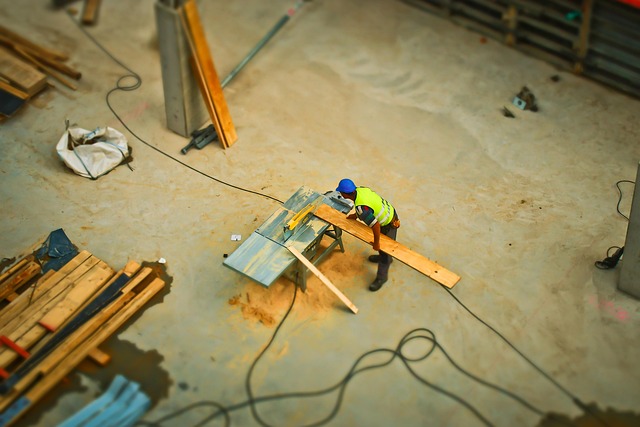CAD drafting for architects revolutionizes renovation and remodeling by providing precise, detailed 2D/3D models, enhancing visualization, communication, and collaboration. It streamlines project management, reduces errors, enables quick modifications, and facilitates successful outcomes tailored to client requirements. This technology is essential for efficient, accurate, and innovative architectural design processes.
In today’s digital era, custom CAD drawings are revolutionizing renovations and remodeling projects. This article delves into the intricacies of CAD drafting for architects, exploring its role in creating accurate plans that streamline construction processes. We examine how architects leverage computer-aided design (CAD) software to enhance efficiency, reduce errors, and bring visions to life. Understanding these principles is key for anyone looking to navigate the world of digital design with confidence.
Understanding Custom CAD Drafting for Renovations
Custom CAD (Computer-Aided Design) drawings are essential tools for architects and designers involved in renovation and remodeling projects. This technology allows for precise, detailed, and visually accurate representations of proposed changes to existing structures. By utilizing CAD drafting software, architects can create 2D and 3D models that showcase every aspect of a renovation project, from floor plans and elevations to intricate details like fixtures and fittings.
CAD drafting for renovations offers numerous advantages over traditional methods. It enables better visualization, facilitates communication among project stakeholders, and ensures accurate measurements and specifications. Architects can easily modify designs, generate multiple iterations, and coordinate with contractors and clients in real-time. This streamlined process leads to more efficient project management, reduced errors, and ultimately, successful renovation outcomes that meet the exacting requirements of both architects and clients alike.
The Role of Architects in Digital Design Process
In today’s digital era, CAD drafting for architects has become an indispensable tool in the renovation and remodeling process. Architects play a pivotal role in integrating this technology to create precise and detailed custom CAD drawings. By utilizing computer-aided design software, architects can translate their creative vision into accurate technical blueprints, ensuring seamless communication between design intent and construction execution.
This digital design process allows for enhanced efficiency, error reduction, and improved collaboration among project stakeholders. Architects can quickly modify designs, generate multiple iterations, and visualize spaces in 2D and 3D, fostering better decision-making and client satisfaction. The use of CAD drafting streamlines the renovation journey, enabling architects to offer innovative solutions tailored to each unique project requirement.
Advantages of Computer-Aided Design (CAD) Software
Computer-Aided Design (CAD) software has revolutionized the way architectural projects are conceived and executed, offering numerous advantages over traditional manual drafting methods. For architects and designers, CAD provides an efficient, precise, and versatile toolset to bring their creative visions to life. With its intuitive interfaces and powerful features, professionals can create detailed digital blueprints, 3D models, and renderings with remarkable accuracy and speed.
One of the key benefits of CAD software is its ability to streamline the design process. Architects can easily manipulate and modify designs, allowing for quick iterations and adjustments based on client feedback or changing requirements. This not only saves time but also ensures that every detail is meticulously considered before construction begins. Moreover, CAD drafting enables better visualization, enabling clients and stakeholders to gain a clearer understanding of the proposed renovation or remodeling project.
Creating Accurate Plans for Remodeling Projects
Creating accurate plans is paramount in successful remodeling projects, and Computer-Aided Design (CAD) drafting for architects plays a pivotal role in this process. With CAD technology, architects can meticulously map out every detail of a renovation or remodel, ensuring precise measurements and exact representations of both existing structures and envisioned changes. This level of accuracy not only saves time but also minimizes errors, budget overruns, and potential delays.
CAD drafting allows architects to create 2D and 3D models, offering a comprehensive visual understanding of the project. They can easily modify designs, test different layouts, and visualize the final result before construction begins. This iterative process promotes informed decision-making, ensuring that the remodeled space meets client expectations while adhering to structural and safety regulations.
Custom CAD drawings have become indispensable tools for architects and renovators, revolutionizing the way we approach remodeling projects. By leveraging computer-aided design (CAD) software, professionals can now create precise digital plans, streamlining the entire process from concept to completion. This technology not only enhances accuracy but also facilitates effective communication between architects, clients, and contractors. As the digital design process continues to evolve, CAD drafting for architects remains a game-changer, ensuring that renovations are not just executed efficiently but also meet the highest standards of quality and precision.
